Open Journal of Environmental Biology
Seasonal variation of marine litter in Tangier Coast: Quantitative and classificative study
Adel Alshawafi1*, Mohamed Analla1, Ebrahim Alwashali2 and Mustapha Aksissou1
2PhD, Laboratory of Nutrition, Health and Environment, Faculty of Sciences, Ibn Tofail University, Kenitra, Morocco
Cite this as
Alshawafi A, Analla M, Alwashali E, Aksissou M (2020) Seasonal variation of marine litter in Tangier Coast: Quantitative and classificative study. Open J Environ Biol 5(1): 007-013. DOI: 10.17352/ojeb.000015Tangier city is considered as one of the most important commercial city in Africa as a result of the new construction of its port, Tangier Med. This study evaluated the abundance of micro and macro debris in Tangier beach and their pollution degree. In 2015, a total of 16 samples were collected by season and size between 1 and 5mm. The means of the results in macro debris are: 1651,4 g/season for plastic; 541,82 g/season for lumber/paper; 86,45 g/season for glass; 58,65 g/season for rubber; 42,5 g/season for metal; and 376,25 g/season for Cloth. The fragment presents the maximum rate with 18.75 g of a total of micro debris of 46,277g. The abundance of macro debris is maximum in season 2 (April-June), while the abundance of all types of macro debris is maximum in season 1 (January-March). The micro debris is very tiny throughout all the year.
Introduction
Marine waste is a global problem with long-lasting and serious impacts on human health and living marine resources [1]. It has become a major concern because of its significant adverse effects and continued widespread to the marine and coastal ecosystems, with serious effects on aquatic organisms at both the local and global level. The use of the coastal region on a large scale and, increasingly, for a large number of activities are often done without even taking into account the environmental aspect and that such activities may lead to a wide range of problems in the coastal territory as a result of these human activities such as agriculture, commerce and industry [2]. This is alongside the negative effects of coastal pollution waste both from the environmental side and the economic, health and aesthetic view of a problem that affects all regions worldwide[3-5]. Most of the pollutants that come to the coastal areas are as a result of agricultural and industrial interior and tourism activities. They include land-based sources of marine industrial plants and manufacturing of debris with adequate controls, wind-blown debris, recreational use of coastal areas, and tourist activities [6,7]. More waste was found closer to population centers, including a greater proportion of consumer plastic items such as bottles, shopping bags and personal hygiene products [8], According to [9], 31.7% of the municipal solid debris resulted from food containers and packaging at about 80 million tons. These items, together with plastic bags, also represent the largest component of marine waste. The quantity of marine litter is increasing in oceans and seas world-wide. For example, in the Central Pacific Gyre, the plankton was covered by the pieces of plastic on the ocean surface [10]. In Japan's coast, the mean increase of pelagic plastic particles floating becomes 10-fold every 2-3 years in the 1990s [11]. The commercial and industrial products are considered one of the main sources of marine waste because of the use of primary microplastics in consumer products which constitutes millions of small sources, often called “diffuse sources”.
The commercial or industrial use of similar products can be expected to constitute significant point of the sources of plastics [12,13]. The quantity of marine debris arrived up to 8 million tones entering in the ocean, where 49% are produced in China, Indonesia, Philippines and Vietnam [14]. The coast of Tangier presents 11% of the total rate of marine pollution [15]. The quality, the quantity and the localization of seafloor marine debris on the Moroccan Mediterranean Sea were studied and the anthropogenic activities considered as the main sources of marine debris [16].
Recently, several studies published to evaluate the impact of entanglement and ingestion of marine debris with 914 species of marine biota [17], the accumulated density of surface and buried debris in two beaches in Senegal and demonstrated that the plastic bags and clothing plastic were the most abundant [18], as well as in Bathing Beach, Qingdao, China [19], fragments and filaments of plastics [20], the threat to costal ecosystems of non-biodegradable and biodegradable plastic on the vegetation by their leachates which affect the germination, dormancy release and early growth [21,22], on water quality and plant growth [23], discussed the requirement of standardization of marine debris studies and the lake of the date of the sampling and the size of the collected debris on the most of published researches [24], applied a new methodology in the Tukad Badung river in Indonesia and the Karamana river in India to evaluate the transport of litter or waste from land to the seas and oceans by the rivers as resource of marine debris [25]. This study provides the current situation for marine debris on Tangier beach by a seasonal quantification and classification of this debris, and integrate the results of our works published in Oued laou, Aouchtam, Martil costals, Morocco to understand these variations.
Material and methods
Study area
Tangier is located in the north-western extremity of Morocco, on the southern border of the Gibraltar Strait, between parallels of '35°46' and 35°48' North and meridians of 5°45' and 5°49' West [26]. Tangier Port is strategically located between the Atlantic and the Mediterranean, the main Mediterranean commercial port, its busiest passenger port, and it is also equipped with a yacht harbor (Figure 1).
The Mediterranean port of Tangier, “Tangier-Med”, is considered to be the largest Mediterranean port on the African continent and it commenced service in July 2007. The original port of Tangier will be dedicated to recreational and cruise shipping in the near future, while ferry activities is programmed to be transferred to the new passenger terminal at the port of Tangier-Med, an industrial and logistics port integrated into the global trade network. With a capacity of 8 million containers in 2016, the port is assumed to accommodate the latest generation of container vessels [27,28].
Field sampling
A total of 16 samples were collected during four seasons in the year 2015. The method of sampling is similar to our research conducted in Oued laou beach [29]. In each season, we took four (4) samples from each transect (A-B-C-D) randomly. There were a number of volunteers, and each one collected all solid wastes found at their parts and they were placed in large bags and titled (part, sector, number and collection date). The choice of the type of marine debris referred to the National Oceanic and Atmospheric Administration [30]. Samples of micro debris sediment in beach were also collected in each season. Every time, three samples were taken from one of the four transects (A-B-C-D). The area of sampling beach site was from the low tide shoreline, the high tide and the end of the beach. All samples had 12,5L of sediment volume consisting of sand and gravel, and were scooped using a small shovel of 50 x 50 cm2 quadrant to a depth of approximately 5cm. Sampling location is determined by a portable global positioning system (GPS) [31] (Figure 2).
Laboratory analysis
After the process of collection, we classified all marine wastes found on the beach as plastic, metal, glass, paper processed lumber, cloth and other. Then each component based on its class was sorted. After then, they were weighted and the results were inputted in a data card. The first procedure continued with large amounts of samples contained in seawater because they were taken from low tide and high tide sites. All samples were dried in the oven for an hour at 65°C and by sunlight. The second procedure was sampling sieving. The sieve aperture size employed 4,75mm, 2,5mm, and 1,25 mm by measuring the sizes are less than or equal to 5 mm. After drying and sieving the plastic samples in each size class of sieve, they were separated, identified and classified into five types of plastic film, foam, fragment, line, pellet and other. Then they were weighted and put in containers.
Model assessment of the degree of pollution (MADP)
The first part of the statistical analysis concerns the descriptive results of marine debris and correlation between items. To find out the extent of contamination of marine waste on the coast of Tangier, we have designed a concept through which we can process and represent the idea of the current situation of the coast Model Assessment of the Degree of Pollution (MADP). The model's principle is to use the percentage as an indicator of the extent of coastal pollution in the four seasons. Five elements were selected for applying the percentage indicator types of waste found on the coast waste weight, percentage of plastic waste, number of items found percentage of micro plastic and the percentage divided into 10 degrees (Table 1).
Results and discussions
The data of this study were collected in 2015 in four seasons (S1: January-March; S2: April-June; S3: July to September; S4: October to December). The area is characterized by the existence of six types of marine waste. The plastics are more abundant with 6605,6 g (60%), following by lumber and paper with 2167,3 g (20%), clothes and fabric with 1505 g (14%), glass with 345,8 g (3%), Rubber with 234,6 g (2%) and Metal with 170 g (1%) (Figure 3). The seasonal variation shows that the plastic debris dominate in the four seasons followed by lumber and paper weight. Only in season 2, cloth and fabric amount is at high level (Figure 4).
Micro waste is also present in the area in five types distributed in three sizes 5mm, 2,5 – 4,75mm, 1-2,5 mm (Table 2) and several forms such as fragments with 18,75 g (37 %) wood, plants and others 12.6 g (34 %), followed by foam 10.21 g (18 %), film 3.05 g (10 %) and line 1.64 (1%) and pellets 0,02. The seasonal variation shows that there is a disparity at micro waste from the first to the fourth season. The highest percentage of wastes is obtained in the second season, then the first season, and a decreased quantity in the third and fourth. This is in addition to the fact that plastic waste was most present on the beach in all four seasons (Table 2).
Degree of pollution
The rubber is positively correlated with glass and lumber/paper (p<0.05). This correlation can be explained by their abundance in winter. Furthermore, clothes/fabric are positively correlated with lumber/paper (p<0.01). This can be explained by the decrease of their abundance from spring to autumn. However, the plastic, metal and glass are dominant in the summer (Tables 3,4). There are many factors which increase the waste percentage on the coast of Tangier. The many passenger shuttles between Europe and Morocco, along with great bulk carriers, small fishing boats, and sailing yachts, all make use of the same channel of entry. A two-stage project is in the pipeline for turning Tangier’s port entirely to cruise-ship and yachting activities, after which will be the transfer of its passenger and merchant traffic to the new Tangier-Med port (45km west of Tangier). Subsequently, four future activities are on the drawing board as well: cruise ships, fishing, yachting and accompanying events [32].
Through the calculation of the average of the five factors that have been evaluated, the beach of Tangier is of the degree 5, which means almost medium. Using this model, we can also assess the coastal pollution of marine waste on the first two levels of the evaluation factor; for example, macro waste, weight and plastic waste. The second level of the season gives us a clear idea of the state of marine waste on the coast. In addition, the model can be used to compare between more than one coast. This is what characterizes this model of Theodore and Williams [33]. which were used in the study conducted on Martil beach [34]. focuses on plastic waste only and the source of its existence on the coast. The results were analyzed using a software package IBM SPSSv23 [35].
The abundance of all type of macro debris is maximum in season 1, medium in season 2 and high in season 3 and 4. The micro debris is of very slight portion throughout all the year. The weight of debris is low in season 2 and very low during the rest of the year. The plastic is very high in season 4 and above medium in Season 3 (Table 5).
The Tangier beach is classified among the most polluted in Morocco. The construction, the sand extraction and the erosion led to a strong pressure on the beaches and caused the disappearance of 7 beaches out of 47 beach in the past years in Morocco. The following beaches are considered as the main beaches at risk: Tangier, Tetouan, and the city, Al Hoceima, Kala Ayres and Nador and Sédia. Because of the bacterial contamination, 17% of the beaches which were surveyed did not correspond with sanitary standards for bathing. The Maritime movement is considered the most important source of oil pollution and hazardous vehicles. It is estimated that the number of vessels crossing the Strait of Gibraltar annually is 60,000 including 2,000 vessels carrying chemicals and 5,000 carrying oil and 12,000 gas tankers [36].
The results showed that the large quantities of waste (plastic, cloth, lumber) on the coast of Tangier were recorded in the second season (April - May - June) and decrease of all types of waste quantities in the first, third and fourth season. It is also noted that the high percentage of plastic components were of plastic frag, foam plastic, plastic bottles, plastic caps. Thus, this result may be reasonable due to the location of the beach near industrial areas in the region and the existence of channels to discharge factory waste to the sea. However, the maximum of plastic waste was recorded in the first season in Martil and the fourth season in Aouchtam (Figure 5). The Paper/lumber presents the maximum in the first season in Oued Laou and Martil successively.
The natural factors such as wind, rain and waves movement could influence the presence of waste on the coastlines. Indeed, we found that the highest amount of marine wastes on the coast of Martil and Oued laou is recorded during the first season in the middle of February (winter), where the weather is in this period (strong winds, heavy rain, high waves, floods) and the absence of tourist activities. The highest amount of garbage in the Tangier coastline was recorded during the second season in 2015 (spring). Hence, this can be explained by the increase in commercial cruise ships to transport passengers and industrial activities during this period. The cloth/fabric presents the maximum in Tangier in the second season and in the first season in Oued Laou. The metal presents the maximum in season 1 in Martil and in season 4 in Tangier (Figure 6).
This increase in plastic waste due to increased global production of plastic fiber quadrupled since it attracted industries to the coastal areas to take advantage of access to marine and inland transportation systems, low cost, and the use of sea water for cooling process, or to deal with shipping methods. Depending directly on the environment’s marine raw materials and its proximity to population centers, heavy industry coastal sites may generate a wide range of environmental problems, with effects that extend to a large extent outside the manufacturing sites, which raises a number of environmental problems to the remnants of coastal heavy industries that have potential negative effects on coastal ecosystems [37,38]. The industrial zones are one of the causes of heavy metals and they are among the principal factors polluting agents of the marine environment. They could have two possible origins: natural origin by partial degradation of the rocks and the washing of mining grounds of an industrial origin related to the human activity [39,40].
This is, however, attributed to the fact that persistent organic pollutants in the marine environment are attached to the surface of plastic debris. Marine litter accumulates on the surface of the seas and oceans and can cause the transmission of invasive species by water currents [41]. In addition to these, small plastic pieces on the surface are imbibed alongside a lot of heavy metals that have a toxic effect on marine organisms and may lead to harmful effects on humans as a result of moving through the food chain [42].
Waste and sewage discharges are of greatest concern in coastal regions and can result in greater adverse impacts from the accumulation of waste material. The effects of excess of nutrients and other substances, such as human wastes from sewage, include oxygen depletion of coastal waters and dramatic reductions in the biodiversity of sea-life communities in affected environments [43].
Conclusions
The commercial activity in the port of Tangier as well as its construction is the main source of marine debris in the Tangier beach. The plastic dominates in the beach at all seasons, especially in winter and summer, which is explained by the tourism in the city of Tangier. Most debris that was surveyed had a high status and presented a major risk on the beach and the aquatic fauna. Means of letters are significantly different by season as the distribution depends on the activity on the port of Tangier. Comparing the results obtained at the Tangier site with the other sites studied in northwest Morocco (Oued laou-Aouchtam-Martil) may not give an explanation of the differences for the macro debris and their variations on the four seasons due to the difference in sources responsible for their presence on the shores of the study area. Thus, the plans in preventing accidental marine pollution do not include a strategy for marine letter as well as the implementation of the ISO 14001 standard in the port of Tangier.
We wish to express our sincere thanks to our colleagues in the laboratory who provided us with the working materials for this study: Group of Applied Algological and Mycology, and the group of Conservation Biological Systems. We are also grateful to the volunteers who helped in the collection phase of the data in the beach of Tangier. Without their efforts, the work would not have been performed.
- Ryan PG, Van Franker M, moloney CL (2009) Monitoring the abundance of plastic debris in the marine environment. Philosophical Transactions of the Royal Society 364: 1999-2012. Link: https://bit.ly/3mItO3T
- NDAM (2003) National Diagnostic Analysis Morocco UNEP/MAP 73.
- UNEP (2005) Marine Litter an analytical overview. Nairobi Kenya: United Nations Environment Program 1-58. Link: https://bit.ly/3kLaXn2
- UNEP (2006) Marine Litter in the Wider Caribbean. Kingston Jamaica: United Nations Environment Program 1-90.
- UNEP (2011) emerging issues in our environment Nairobi: United Nations Environment Program. 1-68.
- Barnes DKA, Galgani F, Thompson RC, Barlaz M (2009) Accumulation and fragmentation of plastic debris in global environments. Philos Trans R Soc Lond B Biol Sci 364: 1985-1998. Link: https://bit.ly/2G8EbNj
- Thevenon F, Carroll C, Sousa J (2014) Plastic Debris in the Ocean: The Characterization of Marine Plastics and their Environmental Impacts, Situation Analysis Report. Gland, Switzerland: IUCN 52. Link: https://bit.ly/300OAlq
- Ocean Conservancy (2011) Marine debris report, Tracking trash 25years of action of the ocean 1-43.
- US EPA (2006) Municipal Solid Waste Generation, Recycling and Disposal in the United States: Facts and Figures for 6. Link: https://bit.ly/330UkO9
- Moore C Algalita (2006) Marine Research Foundation, presentation at California District Attorney's Association: Trashed: Plastic Plastic Everywhere 1-8 .
- Ogi H, Fukimoto Y (2000) A Sorting Method for Small Plastic Debris Floating on the Sea Surface and Stranded on Sandy Beaches, Bullein of the Faculty of Fisheries Hokkaido University 5: 71-93. Link: https://bit.ly/32XGTOF
- Gregory MR (1996) Plastic 'scrubbers' in hand cleansers: a further (and minor) source for marine pollution identified. Marine Pollution Bulletin 32: 867-871. Link: https://bit.ly/303eVzt
- Arthur C, Baker J (2011) Proceedings of the Second Research Workshop on Microplastic Debris. 5-6. NOAA Technical Memorandum NOS-OR&R-39.
- Jambeck JR, Roland G, Chris W, Siegler TR, Miriam P, et al. (2015) Plastic waste inputs from land into the ocean. Science 347: 768-771. Link: https://bit.ly/3j35p6W
- SAEI (2009) La pollution maritimes. regime des infractions et des peines notion de responsabilite: Ministere de la justice service des affaires europeenne et international Paris 1-39.
- Loulad S, Houssa R, Ouamari NE, Rhinane H (2019) Quantity and spatial distribution of seafloor marine debris in the Moroccan Mediterranean Sea. Mar Pollut Bull 139: 163-173. Link: https://bit.ly/3csdW0r
- Kühn S, van Franeker JA (2020) Quantitative overview of marine debris ingested by marine megafauna. Mar Pollut Bull 151: 110858. Link: https://bit.ly/2GarYrq
- Tavares DC, Moura JF, Ceesay A, Merico A (2020) Density and composition of surface and buried plastic debris in beaches of Senegal. Sci Total Environ 737: 139633. Link: https://bit.ly/3651d2z
- Pervez R, Wang Y, Mahmood Q, Zahir M, Jattak Z (2020) Abundance, type, and origin of litter on No. 1 Bathing Beach of Qingdao, China. J Coast Conserv 24: 34. Link: https://bit.ly/3kIEvRX
- Velez N, Zardi GI, Lo Savio R, McQuaid CD, Valbusa U, et al. (2019) A baseline assessment of beach macrolitter and microplastics along northeastern Atlantic shores. Mar Pollut Bull 149. Link: https://bit.ly/35ZT7Zf
- Menicagli V, Balestri E, Lardicci C (2019) Exposure of coastal dune vegetation to plastic bag leachates: A neglected impact of plastic litter. Sci Total Environ 683: 737-748. Link: https://bit.ly/3cqB8fE
- Menicagli V, Balestri E, Vallerini F, Castelli A, Lardicci C (2020) Combined effect of plastic litter and increased atmospheric nitrogen deposition on vegetative propagules of dune plants: A further threat to coastal ecosystems. Environ Pollut 266: 115281. Link: https://bit.ly/3620I9w
- Balestri E, Menicagli V, Ligorini V, Fulignati S, Raspolli Galletti AM, et al. (2019) Phytotoxicity assessment of conventional and biodegradable plastic bags using seed germination test. Ecol Indic 102: 569-580. Link: https://bit.ly/32WNSr9
- Serra-Gonçalves C, Lavers JL, Bond AL (2019) Global Review of Beach Debris Monitoring and Future Recommendations. Environ Sci Technol 53: 12158-12167. Link: https://bit.ly/302cTj6
- Owens KA, Kamil PI (2020) Adapting coastal collection methods for river assessment to increase data on global plastic pollution: examples from India and Indonesia. Front Environ Sci 7: 208. Link: https://bit.ly/2FWfNin
- Achab M, El Arrim A, El Moumni B, El Hatimi I (2007) Metallic pollution affecting the bay of Tangier and its continental emissaries: Anthropic impact. Thalassas 23: 23-36. Link: https://bit.ly/2FZjS5j
- EKML (2017) A strategic geographical position Morocco at the crossroads of the major seaways: Embassy of The Kingdom of Morocco in London. Link: https://bit.ly/3kNS8j5
- MATEE (2004) Projet SMAP III Sensibilisation et creation d'un cadre politique favorisant !Integration de I'environnement et du developpement avec ('accent sur la gestion integree des zones cotieres - GIZC: Ministère de L’Aménagement du Territoire, de l’Eau et de l’environnement. 5.
- Alshawafi A, Aksissou M, Mohamed A (2016) Monitoring the Marine Debris at Coastal Oued Laou on Mediterranean Sea, Morocco. European Journal of Scientific Research 143: 26-35. Link: https://bit.ly/2G6MAkm
- Opfer S, Arthur C, Lippiatt S (2012) NOAA Marine Debris Shoreline Survey Field Guide. Link: https://bit.ly/3csXjlB
- Mc Dermid T, McMullen L (2004) Quantitative analysis of small-plastic debris on beaches in the Hawaiian archipelago. Mar Pollut Bull 48: 790-794. Link: https://bit.ly/2RUof47
- César D, Igor L (2013) Cities and Transport Networks in Shipping and Logistics Research. The Asian Journal of Shipping and Logistics 29: 145-166. Link: https://bit.ly/3cqAdfc
- David TT, Allan WT (2004) Development of a ‘Matrix Scoring Technique’ to determine litter sources at a Bristol Channel beach. J Coast Conserv 10: 119-127. Link: https://bit.ly/33U7SKy
- >Alshawafi A, Aksissou M, Mohamed A, Alwashali E (2017) Assessment of Marine debris on the coastal wetland of Martil in the north-east of Morocco. Mar Pollut Bull 117: 302-310. Link: https://bit.ly/3cugg77
- Moore CJ, Lattin GL, Zellers AF (2011) Quantity and type of plastic debris flowing from two urban rivers to coastal waters and beaches of Southern California. Journal of Integrated Coastal Zone Management 11: 65-73. Link: https://bit.ly/364k0uY
- EAA (2006) Priority issues in the Mediterranean environment: European Environment Agency. 1-88.
- Agoumi O (1998) Niveau de pollution des plages de la baie de Tanger. ThèseDoctorat, Pharmacie, Univ. Médecine et Pharmacie, Rabat, Maroc 40: 60.
- Dahhou M (1999) Contribution à l’étude de la pollution sur le littoral Nord Maroc entre Tanger et Tétouan. Thèse de DESA : Univ. Mohamed V Agdal, Fac. Sci, Rabat 147.
- Chabert D (1980) Pollution d’un milieu lagunaire par les métaux lourds. Vie marine. 145.
- Faguet D (1982) Influence des substances humiquesur les formes dissoutes et particulaires de quelques métaux (Zn, Fe, Co, Mn.) dans les milieux marin et lagunaire. Thèse Doctorat de spécialité. Univ. Perpignan, France. 126.
- Mato Y, Isobe T, Takada H, Kanehiro H, Ohtake C, Kaminuma T (2001) Plastic resin pellets as a transport medium for toxic chemicals in the marine environment. Environ Sci Technol 35: 318-324. Link: https://bit.ly/304id5c
- Moore CJ (2008) Synthetic polymers in the marine environment: A rapidly increasing, long-term threat. Environmental Research. 108: 131-139. Link: https://bit.ly/3kPJ4u5
- ANZECC (1996) Working Together to Reduce Impacts from Shipping Operations: ANZECC strategy to protect the marine environment (1). Strategy and Action Plan. Environment Protection Agency, Commonwealth: Australian and New Zealand Environment and Conservation Council.
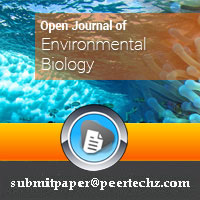
Article Alerts
Subscribe to our articles alerts and stay tuned.
 This work is licensed under a Creative Commons Attribution 4.0 International License.
This work is licensed under a Creative Commons Attribution 4.0 International License.
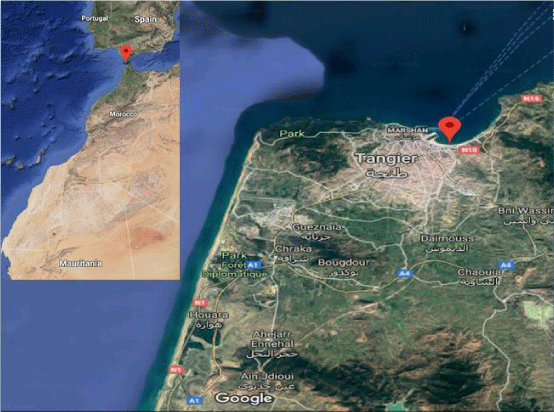
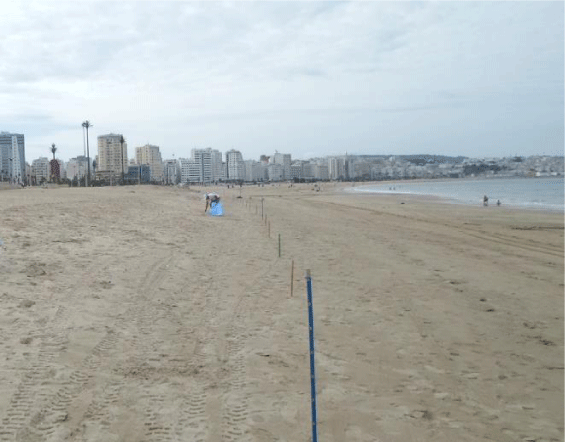
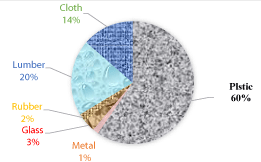
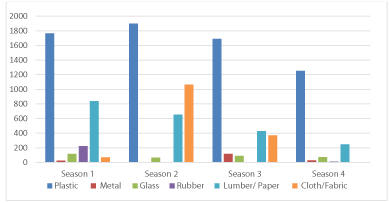
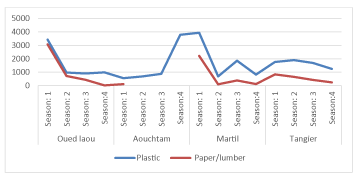
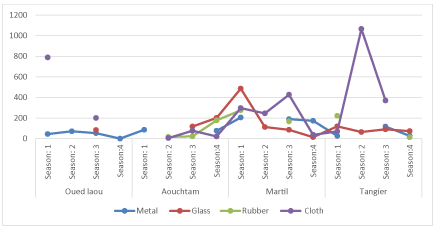
 Save to Mendeley
Save to Mendeley
